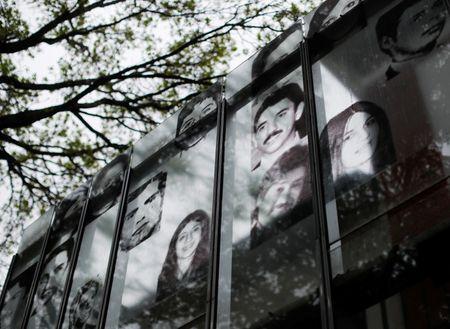World War One cemeteries, Rwanda genocide sites, Argentine torture center declared UNESCO World Heritage

By Geert De Clercq
PARIS (Reuters) – World War One cemeteries in Belgium and France, the hills of Rwanda’s 1994 genocide and a former torture center in Argentina have been declared UNESCO World Heritage sites as the UN agency ends a moratorium on memorial sites for human suffering.
So far, the Auschwitz-Birkenau concentration camp in Poland and the Hiroshima Peace Memorial in Japan have been the only memorial sites inscribed on the United Nation’s cultural agency’s closely watched World Heritage list.
At a meeting of the UNESCO World Heritage Committee in Riyadh, Saudi Arabia, on Wednesday, UNESCO member states agreed to add the World War One and Rwanda sites to the list, after adding the Argentina torture memorial on Tuesday.
“The examination of these three dossiers marks a new stage in the role of World Heritage on a global scale,” a UNESCO briefing note said ahead of the decision.
A UNESCO meeting in 2018 had held off on adding memorial sites to the list as the agency debated whether the heritage list is a relevant tool for sites of memory associated with atrocities and conflicts.
The agency said member states agreed in early 2023 that these sites can play a key role in peace-building, which is UNESCO’s primary purpose, and that the committee would consider the nominations of the three sites.
The World War One sites encompass a series of military cemeteries, battlefield burial grounds and memorials between the north of Belgium and the east of France. The 139 sites trace the outline of World War One’s Western Front and hold the remains of tens of thousands of soldiers of several nationalities.
“At a time when war has come back to the gates of Europe…these sites more than ever incarnate a plea for peace,” French Culture Minister Rima Abdul-Malak said in a statement.
The Rwanda genocide sites comprise a series of hills where in 1994 an estimated 1 million people – Tutsi, but also moderate Hutu and Twa people – were killed by armed militias.
Argentina’s ESMA Museum, the site of the former Navy School of Mechanics in Buenos Aires, was a secret detention centre during the 1976-1983 dictatorship, which was used for torturing and killing opponents to the military regime, UNESCO said.
The World Heritage Committee’s annual meeting ends on Monday.
(Reporting by Geert De Clercq; Editing by Leslie Adler)